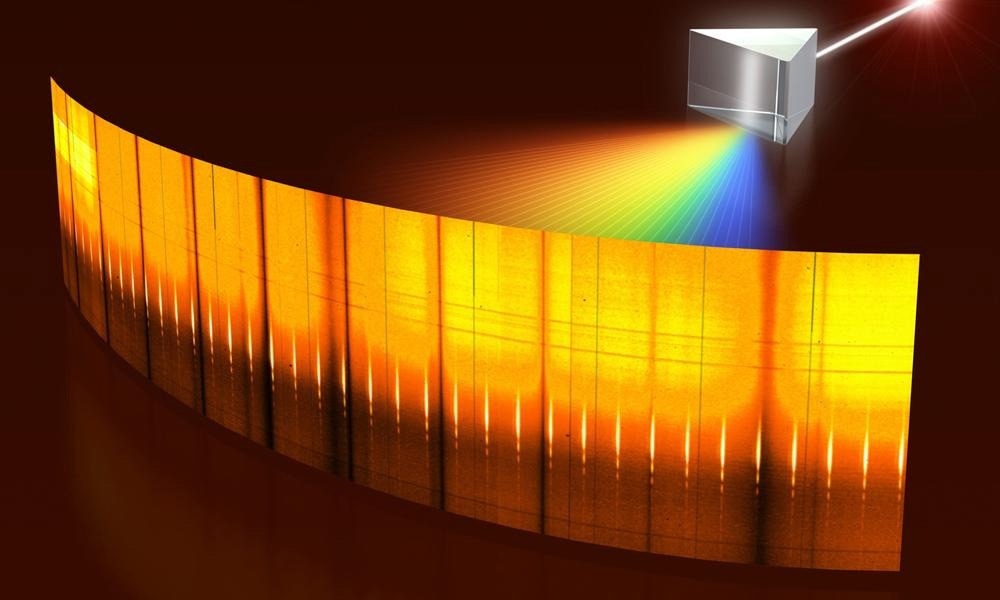A new method for capturing hyperspectral images—those that can gather data from the whole electromagnetic spectrum—that can function in real-time and offers a higher resolution than any current technology has been patented by the Universidad Carlos III de Madrid (UC3M). This finding could signify a breakthrough for chemical analysis-related scientific and industrial applications.

Image Credit: Universidad Carlos III de Madrid
The Sensors and Instrumentation Techniques group at UC3M has patented a system that consists of a light source that turns a regular camera into a hyperspectral camera.
This method makes it possible to acquire comprehensive characterizations of the chemical composition of the material being tested by detecting the optical absorptions or molecular resonances characteristic of each compound. Dual-comb spectroscopy, a sophisticated analytical method, is applied to do this.
The dual-comb system operates by interfering with the light from two optical sources, also known as optical frequency combs. This mixing process creates a signal known as an interferogram at a speed that, until recently, was too rapid for even the most advanced high-speed cameras to record.
The research team behind this invention created a dual-comb electro-optical source system based on fiber optic components. The major component is a dual-comb illuminator that can produce two interference-free frequency combs at far lower frequencies than existing systems can.
This enables the detection of that signal by any camera with sensitivity within the dual-comb system’s operating emission range. Furthermore, it can operate in a variety of frequency bands (near-infrared, mid-infrared, and terahertz).
The methods based on frequency combs in use until this time allowed for analyzing a single point on the sample, where the light source was directed.
The UC3M research team has developed a system that uses a dual frequency comb instead of the spectral interrogators that now come with hyperspectral cameras to enable spectrally analyzing the entire sample. This system is revolutionary in terms of the measuring method it employs.
In addition to identifying the compound, this characterization allows the analysis of other parameters such as temperature, pressure, and concentration.
The need arises from the shortcomings of current technologies, in which the measurements are very slow and optical absorptions are not identified precisely enough. The high optical resolution with which we can characterize the entire sample with our technology is essential when we work, for example, with gases.
Pedro Martín Mateos, Project Researcher and Lecturer, Electronic Technology Department, Universidad Carlos III de Madrid
This system, which can be applied in various fields, allows for the analysis of a sample’s whole chemical composition. As of now, it has undergone testing for gas detection and analysis, along with examining the features of various foods and materials, including plastic.
Mateos concluded, “We have already demonstrated its usefulness for the study of gaseous samples. This would be useful for the development of more efficient burners or for safety issues. We have also used it for the analysis of certain foods and even for drying wood, and we are starting to develop a system that will allow us to monitor combustion processes with new fuels or alternative fuels, such as hydrogen.”
Nueva tecnología para la captura de imágenes hiperespectrales
Video Credit: Universidad Carlos III de Madrid